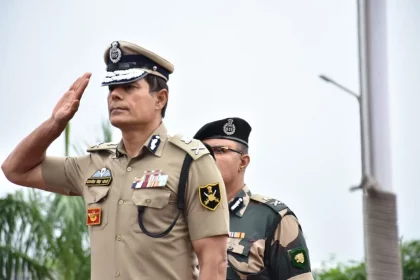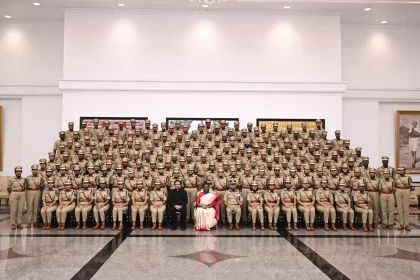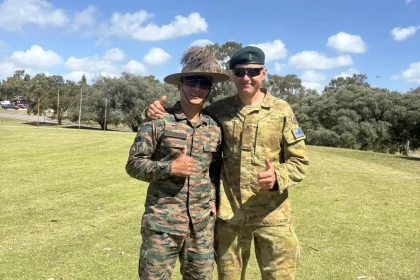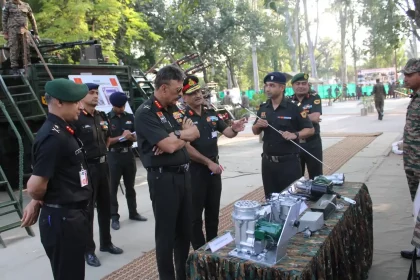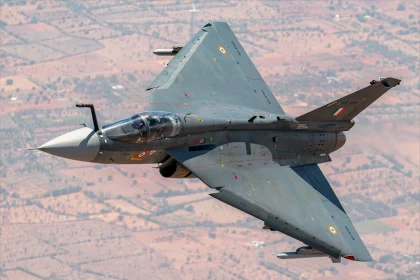BSF Director General Daljit Singh Chaudhary to Retire on November 30, 2025
BSF DG Daljit Singh Chaudhary, a 1990-batch IPS officer known for his leadership and gallantry, will retire on November 30,…
President Droupadi Murmu Interacts with IPS Probationers of 77 RR Batch at Rashtrapati Bhavan
President Droupadi Murmu urged IPS probationers of the 77 RR batch to uphold integrity and lead a future-ready police force…
Exercise AUSTRAHIND 2025 Concludes in Perth, Strengthening India–Australia Defence Ties
Exercise AUSTRAHIND 2025 concluded in Perth, showcasing enhanced military interoperability and reaffirming the strong India–Australia defence partnership.
Lt Gen Rajiv Kumar Sahni Reviews EME Operational Preparedness at Kharga Corps
Lt Gen Rajiv Kumar Sahni visited Kharga Corps to review EME preparedness and praised indigenous drone innovations promoting self-reliance and…
TEJAS Leads Breakthrough MUM-T Maritime Strike off Konkan Coast
Seamless Tejas–UAV teaming and autonomous control validate India’s rising capability in networked maritime strike and manned-unmanned integration.
US Navy Helicopter and Fighter Jet Crash During Routine Operations in South China Sea; All Crew Members Safe
Both aircraft from USS Nimitz crashed during separate routine operations; no casualties reported as investigation begins amid US-China tensions.

